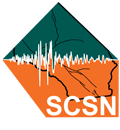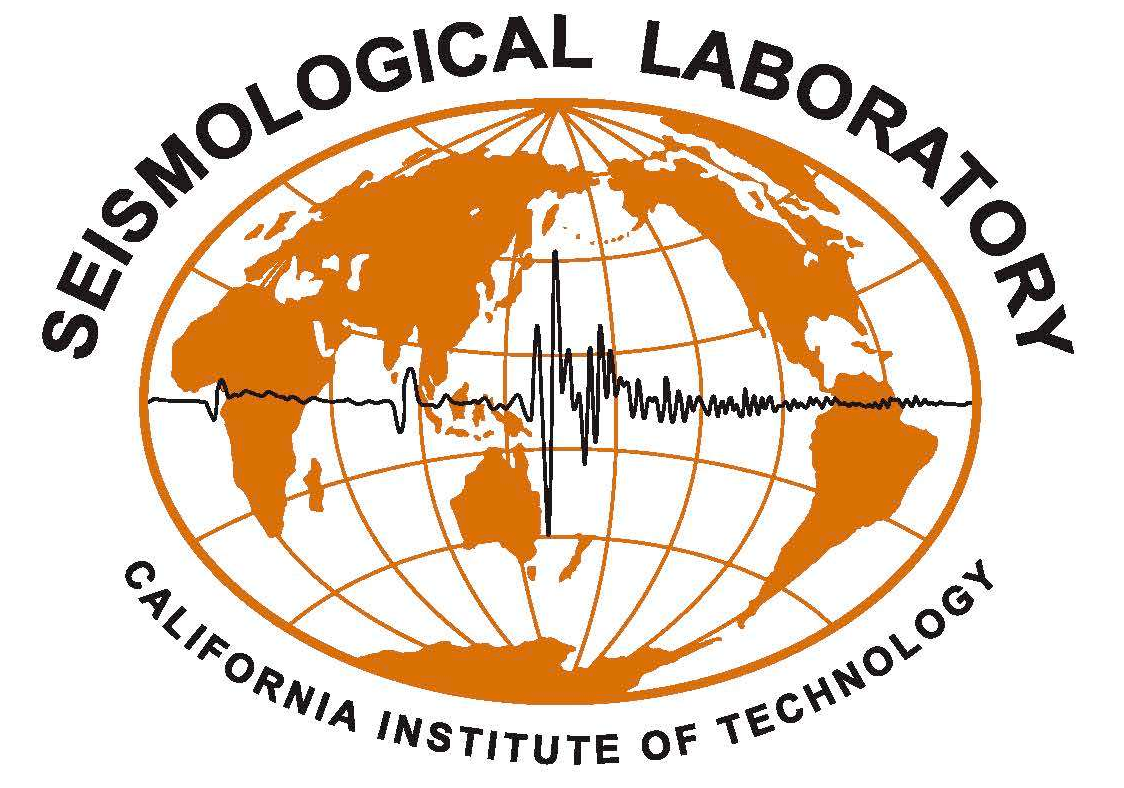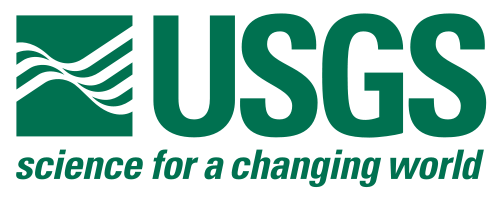Beyond locations and magnitudes, and the collation of the earthquake catalog, SCSN creates a number of additional ‘products’. These are distributed as various tools through the Southern California Data Center (SCEDC) and our other partners, linked below, to make them available to scientific researchers and the wider public. These include:
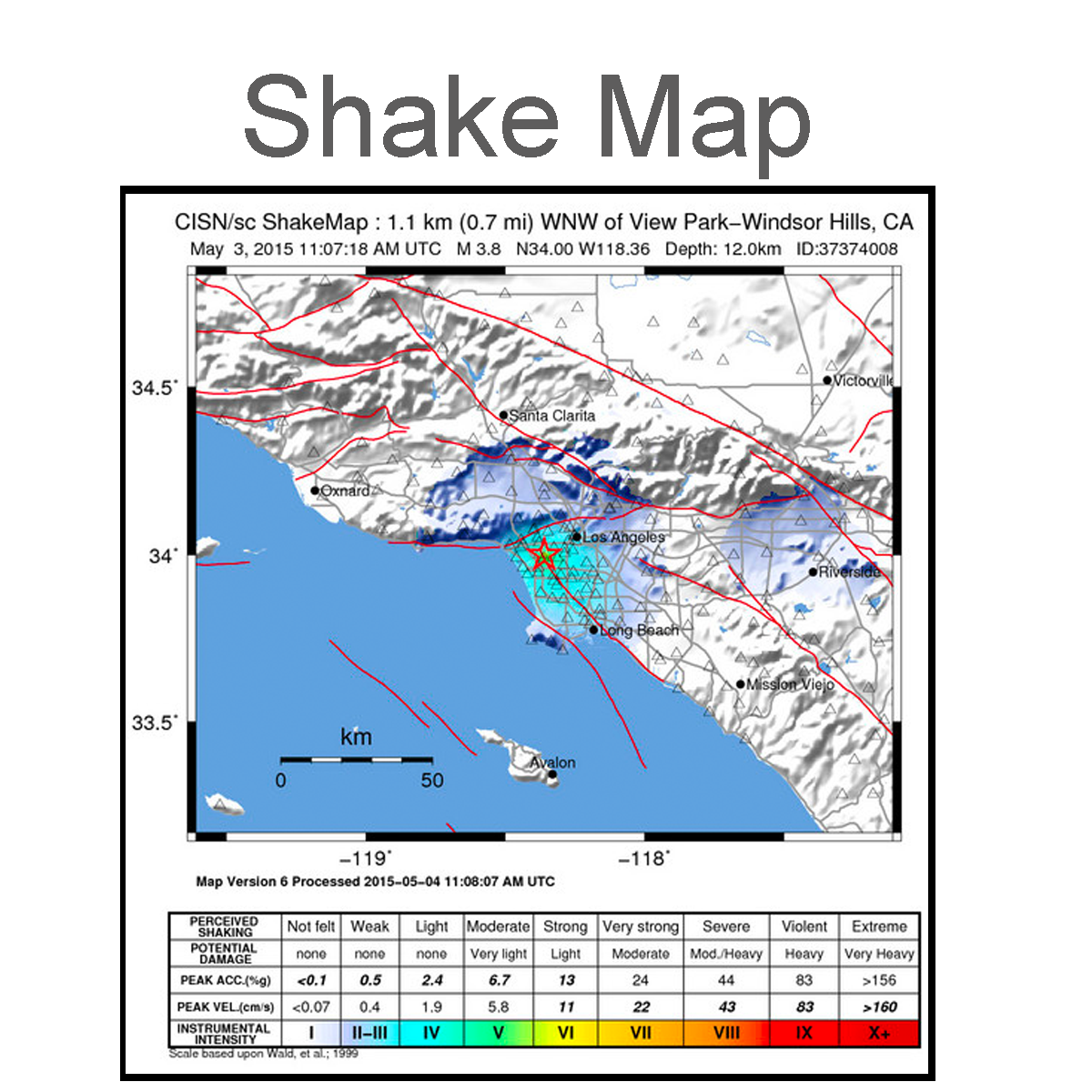 |
ShakeMaps are maps that provide the visual distribution of ground motion and shaking intensity following a significant earthquake. They’re used for post-earthquake response and recovery, public and scientific information, as well as for preparedness exercises and disaster planning. |
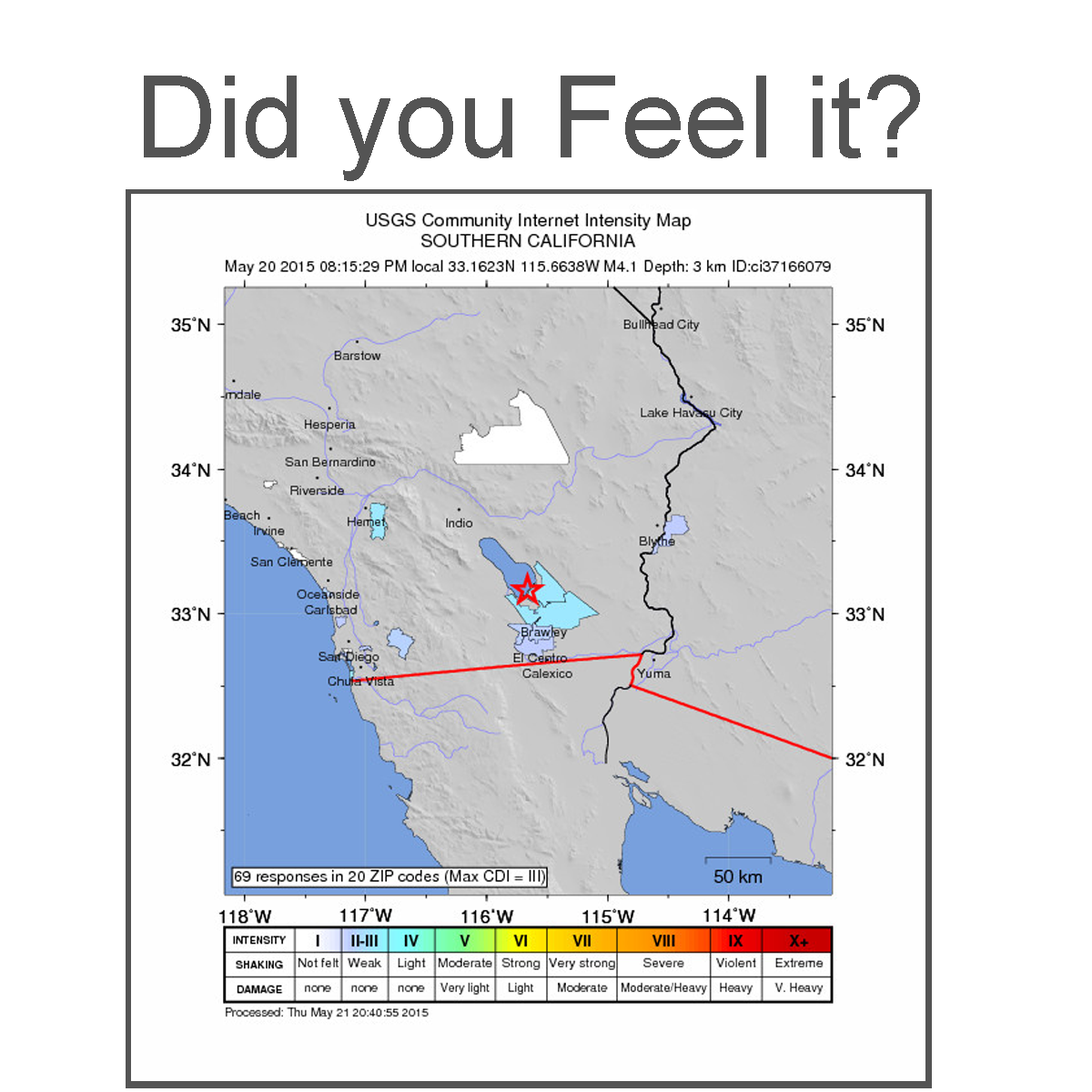 |
Contribute your experience of an earthquake and add to the scientific body of information by filling out a Did You Feel It? report. Submit valuable information on the extent of ground shaking and damage and ensure your area has been represented in the compilation of the community intensity map. |
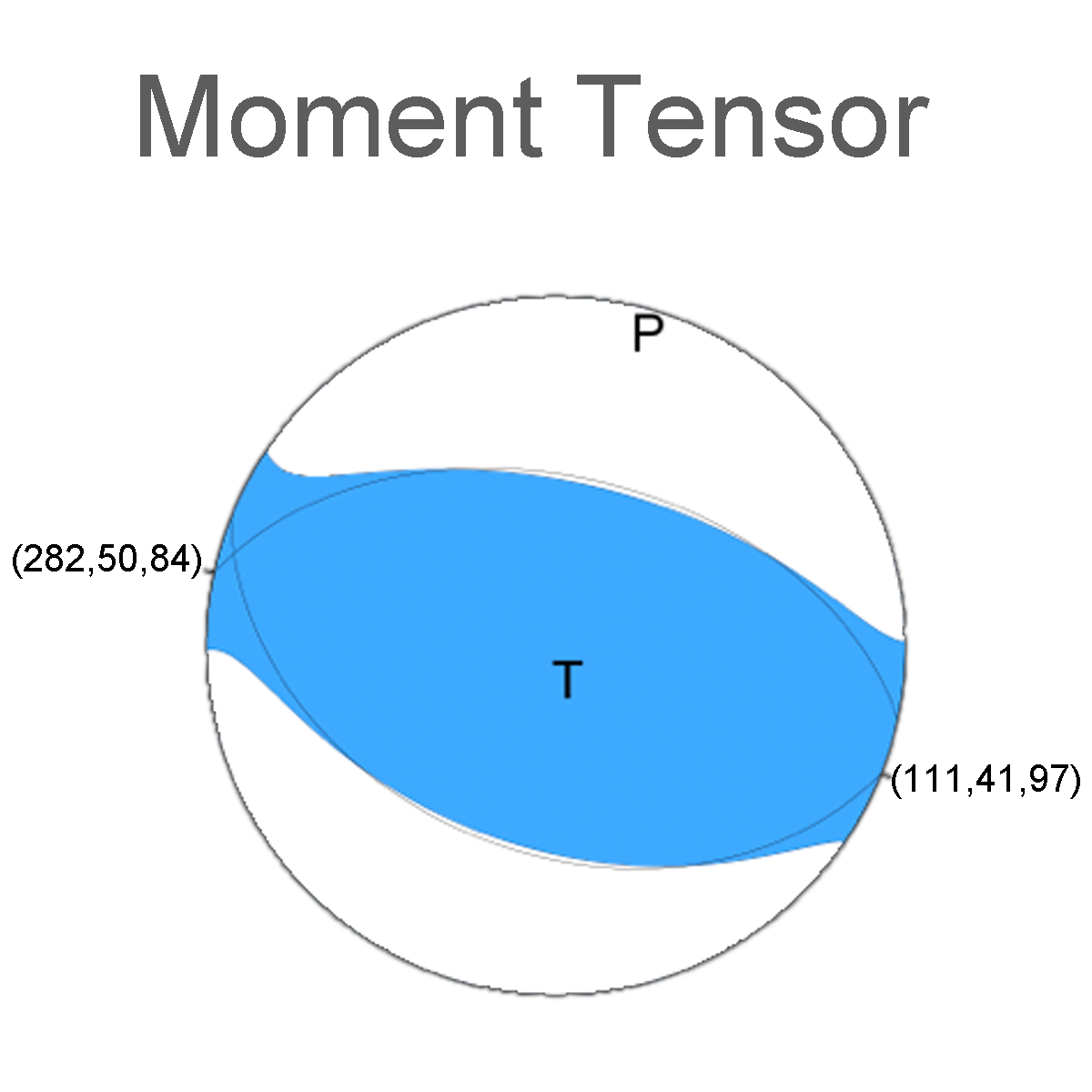 |
Moment tensor is a mathematical representation of the movement on a fault during an earthquake. Often referred to as the “beach ball”, the tensor depends on the source strength of the earthquake and its fault orientation. |
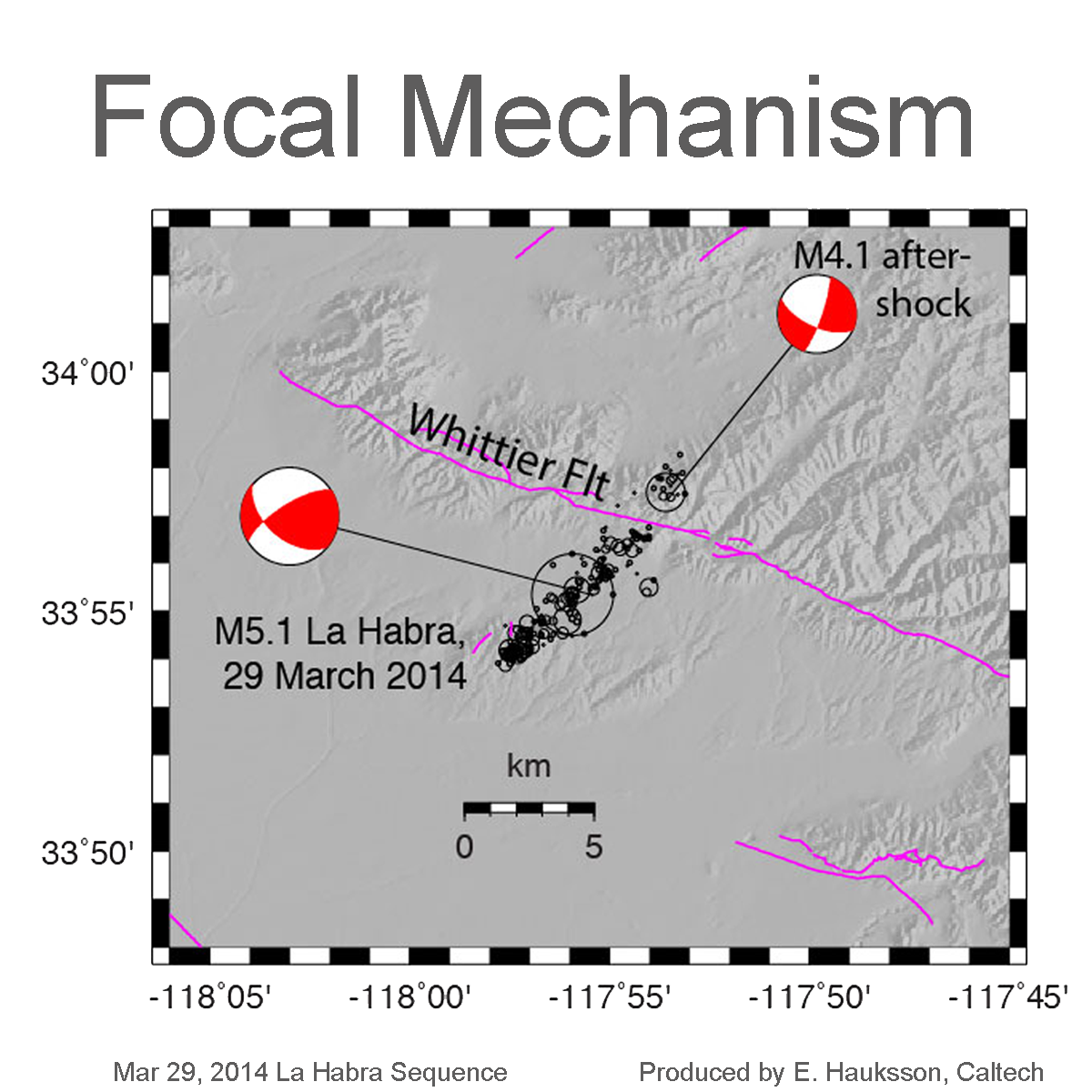 |
The Focal Mechanism is similar to the Moment Tensor, but it uses the first motions (ups and downs) of the earthquake’s P-wave to determine the fault’s movement and orientation. |
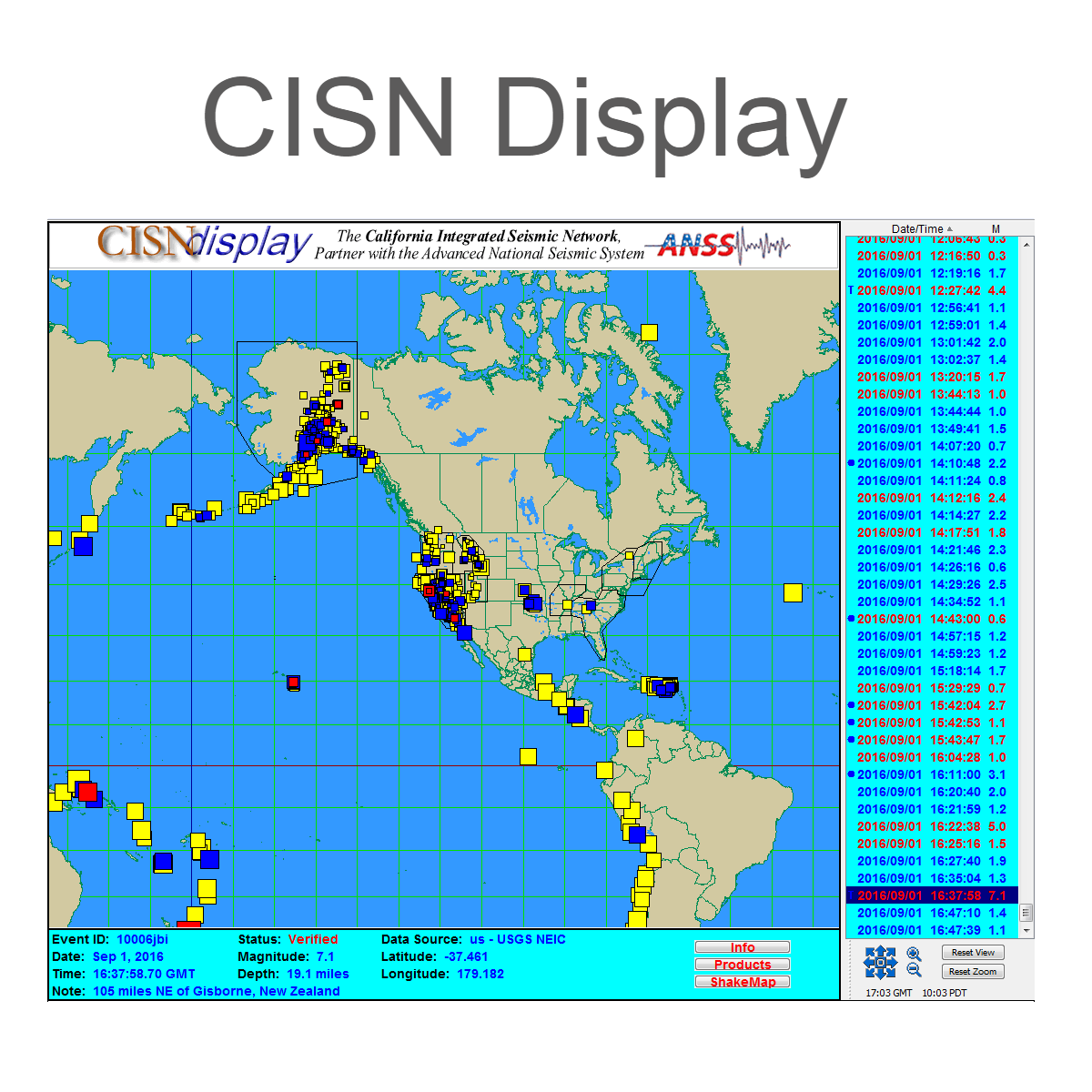 |
As part of the California Integrated Seismic Network (CISN) partnership, one of the primary means of distributing SCSN earthquake data to our partners and emergency managers is through the CISN display. The display uses SCSN’s submitted data to continuously report any significant earthquake activity in California. The CISN Display is now managed by the California Geological Survey (CGS). |
| SCEDC | Data from the SCSN, including earthquake catalog, station and waveform data, can be obtained through the Southern California Data Center (SCEDC). |
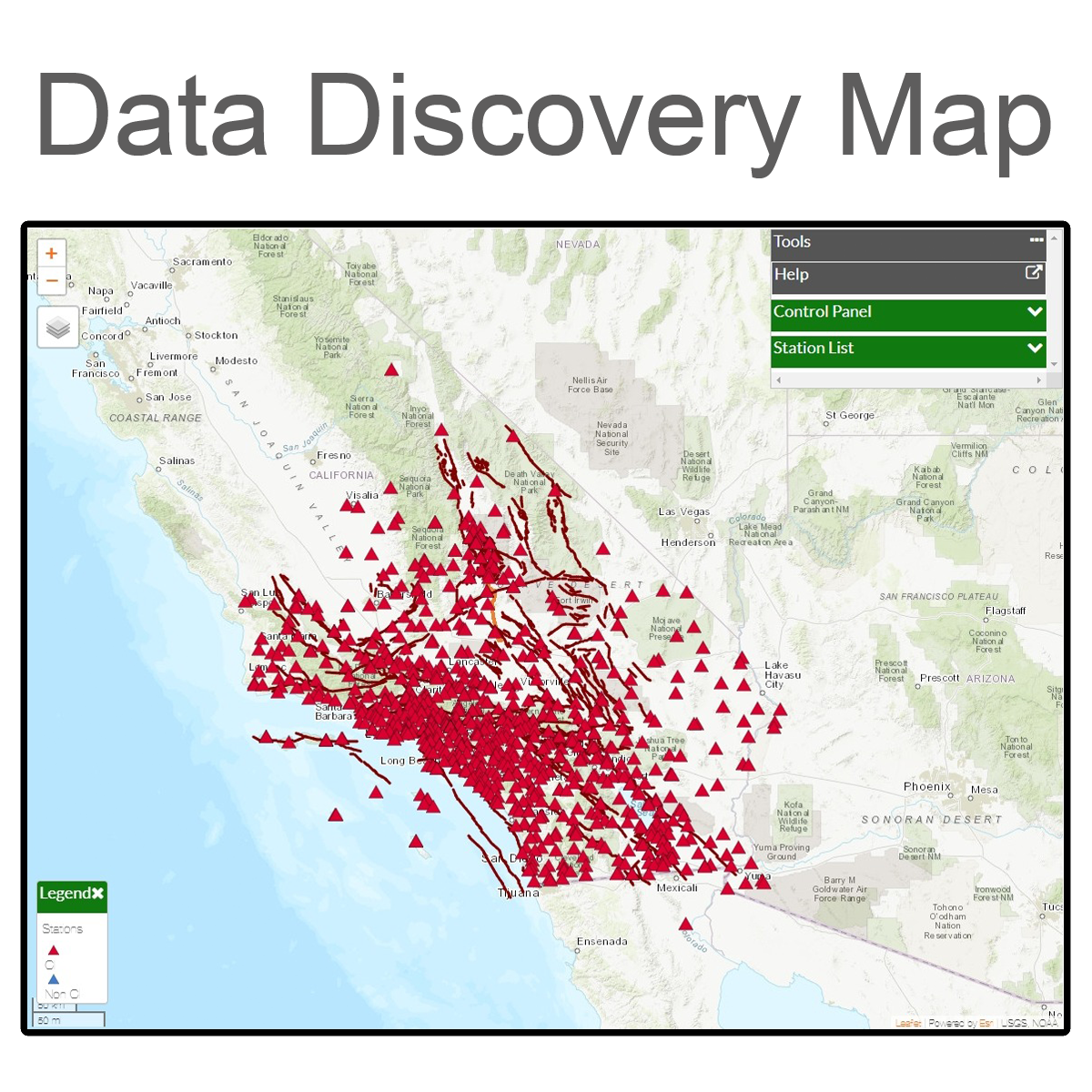 |
The SCEDC provides the Data Discovery Map, which shows what data is present in SCEDC archives for a given station. Stations displayed have at least one of the following asset types present in the archive: continuous waveforms, event windowed waveforms, or labeled seismic phase arrival from SCSN processing. Use this map to see what data can be accessed from the archive. |
